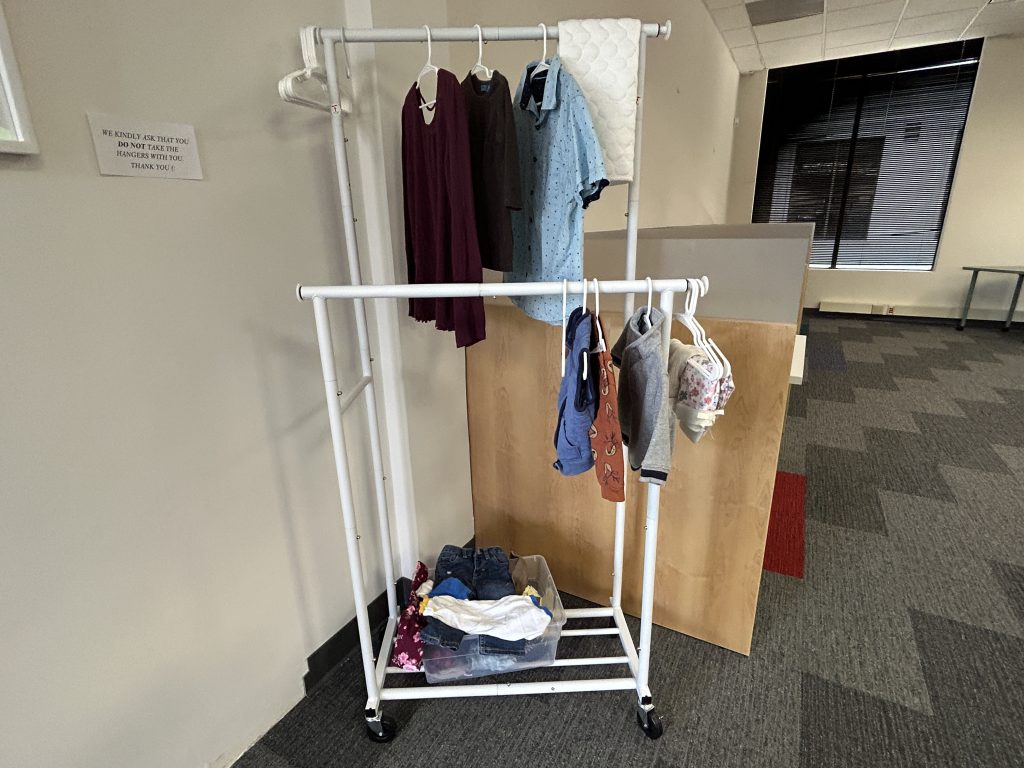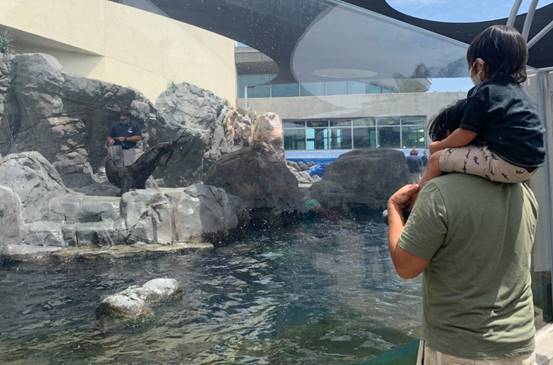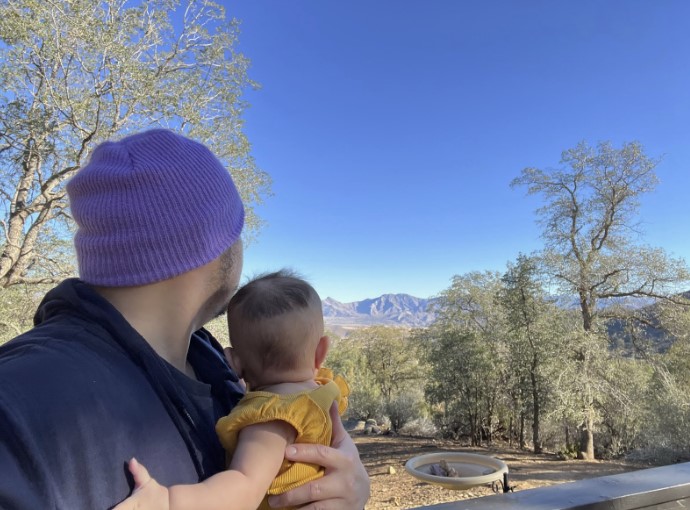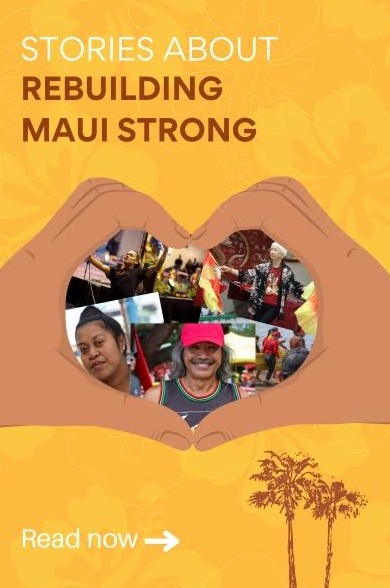By Jia H. Jung, California Local News Fellow
Melinda Lin, 36, was just starting off the 2022-2023 school year at her job in early education when she received a phone call from Family Builders, a foster-to-adoption agency based in Alameda County, Calif.
By this time, Lin, using a pseudonym to protect the privacy of her fostered and adopted children and grandchildren, had completed foster parent training and passed a home suitability screening mid-pandemic. After several years on a waitlist to foster a child, her wait was over.
The agency asked if Lin could come in and see a newborn girl someone had left at a fire station as a safe surrender – a child handed over to the county’s care with no strings attached.
A wave of surreality washed over her as she stared down at the infant in the NICU ward of the hospital.
This is my baby, she thought.
The baby was a rarity in the foster system and even rarer because of her Asian identity.
In its annual report of U.S. Foster Care and Adoption statistics this spring, the Administration for Children and Families reported that 1% of all foster children through 18 years of age were from Asian backgrounds.
The 976 children classified as “Native Hawaiian/Other Pacific Islander” were rounded down to 0%.
The report also stated that, in fiscal year 2022, 0% of the country’s foster children who were adopted or awaiting adoption were Asian.
By rounding down to zero, the scientific method erased the existence and needs of 207 Asian children who were adopted that year, and 439 more who were waiting to be adopted. And some organizations working on the ground confidently say these numbers are undercounted.
This scientifically-validated erasure leads to the exclusion of Asian and Pacific Islander foster children from crucial policy and public health conversations.
This means that some of the country’s most vulnerable children have reduced access to social services simply because they are classified as Asian or Pacific Islander, and not numerous enough show up in research.
‘Very, very small’
The invisibility can start at birth.
Lin, a single Chinese American woman, was only five years old when she decided that she wanted to become a foster or adoptive mother someday. The inspiration came from attending a church where a couple of families had adoptees from China and Korea.
“I wanted my adopted children to be my first choice,” she remembered to AsAmNews, in a video call.
But never in the arduous process of becoming eligible to foster a child had it entered Lin’s mind that she might match with a child who looked like her. The counties that manage foster care record basic demographics of children upon intake. But for avoidance of discrimination, they do not use race or ethnicity as a factor in placement.
Lin joined a foster parent training program in 2019 after seeing an advertisement for Family Builders, a major foster-to-adoption agency based in Alameda County and serving the greater Bay Area. But the fact that her first foster child happened to be Asian was a random event.
In a phone call with AsAmNews, Jill Jacobs, director of Family Builders, said that no one at the organization had comments on the approach to serving current or former Asian or Pacific Islander foster children at the time of placement.
“Anyway, the number of Asians is very, very small,” she added.
Zooming in
People designated as Asian or Pacific Islander still comprise just under 7% of the entire U.S. population.
But entities that influence policymaking and public opinions around civic engagement, health, housing, homelessness, incarceration, and other major social issues have just begun to count Asians and Pacific Islanders seriously because of how these communities are growing.
This makes it difficult for organizations advocating for Asian and Pacific Islander individuals to cite evidence of their needs beyond findings in one-off studies or anecdotal accounts.
Organizations serving areas like Los Angeles and the Bay Area of California where the highest concentrations of diverse Asian and Pacific Islander communities live are often familiar with the urgent and unmet social services needs in these communities. These needs include housing, foster parents, and community networks for foster children seeking culturally suitable care.

James Keovilayphone, a Lao American coaching manager at the Oakland organization Beyond Emancipation, known as B:E for short, oversees a team of staff coaches who help young adults transition out of foster care. He corroborated that very few Asian or Pacific Islander children come through the doors. But, he said, this does not dismiss the importance of meeting the needs of these few.
Teshika Hatch, who became director of transitions for B:E in February, agreed. She said that her tortuous identity journey as a mixed race Japanese American and the grounding effect of finding community underlie her desire to better serve Asian and Pacific Islander children and youth in and aging out of the foster care system.
As a main hub and holder of Alameda County’s programs for education, career, and housing support, B:E helps young adults transition out of foster care with life skills classes, career counseling, and assistance with school tuition and living expenses.
And until a contract change taking effect on Oct. 1, B:E also provides high-demand transitional housing in shared homes and through vouchers for community-style living arrangements offered by the government.
Keovilayphone said that organizations need to better define the specific needs of the Asian and Pacific Islander foster children community and include this information in training for foster care providers to prepare them to be sensitive to all backgrounds.
“I think they really do struggle with cultural identity and figuring out what they need for themselves, because there’s not a lot of representation when it comes to foster care, whether it’s with workers, or their peers in the community,” he said, of the Asian or Pacific Islander foster children he has encountered.
He said service providers have to know resources for foster children inside-out to be able to listen to them and help them make some of the biggest choices of their lives. Sometimes, the greatest help for Asian or Pacific Islander foster youth was just to feel heard and seen.
In his six years at B:E, Keovilayphone has worked with a handful of Asian or Pacific Islander children and said that their population seemed to be on the rise lately, especially among Lao Americans and Pacific Islanders. But their numbers are still too small to make any solid claims about trends or causation.
He attributes his lasting bonds with Asian or Pacific Islander clients to the understanding he is able to provide as someone from the same background.
He recalled the joy of introducing a 17-year-old Southeast Asian American foster child to Lao New Year celebrations. The feeling was bittersweet.
“On the other side of the coin,” he said, “it was really kind of disheartening to hear that our young people who are going through the systems are losing their culture, losing their identity, and kind of getting lost in that mix of getting accustomed to more of the American side or whoever their foster care or guardian is and whatever environment that they are in.”
He keeps up with former foster youth on a case-by-case basis; one of them is Jessica Mi. 
‘I can’t be the only one.’
Mi grew up the oldest daughter of two in a middle class neighborhood of the Castro Valley in the East Bay with parents who were loving and taught the value of education but had fights that sometimes turned violent.
In 2014, when she was 14, she came home alone from school and saw a dead body. She fled the scene and called the police, later learning that the deceased person had been her mother, shot to death by her father.
She and her younger sister found temporary emergency placement for six months with a CHamoru family from Guam who had a full house with four biological children, five dogs, and a daycare operation.
She felt a degree of comfort and familiarity with the Pacific Islander family but everything about the home was different, from the house to the food to the fact that nobody spoke Mandarin as Mi’s family had.
The sisters eventually entered a longer-term home within their original school district with a single White foster woman who was not often present, yet very controlling.
The woman did not give Mi rides to her activities but expected the teenager to report her every move via text message. She limited what foods and snacks Mi and her sister could access – a harsh contrast to the limitless Chinese dinners with extended family and friends the girls had enjoyed while growing up and continued to enjoy on occasion with their maternal aunt.
“Being Chinese American was an important, defining part of my identity, and it was hard for me to preserve that connection while in foster care,” she wrote, in a post on Medium.
She told herself that if she could just get through high school, her life could still be pretty good. Academic success was the only validation she could find in a situation in which she felt like a disadvantaged, lone “other.”
Mi found a way to leave the foster parent who was holding her back. With the help of a social worker, she secured a place in a transitional living program at Real Alternatives for Adolescents (RAFA) in Hayward. Also known as BAYC, the transitional program helps foster children on the threshold of adulthood live without foster parents.
Her roommate in a BAYC group home happened to be a half-Filipino girl who was a high school senior, like Mi. This was the only other foster child of Asian or Pacific Islander descent other than her own sister Mi would ever encounter in the system.
Mi’s admission to Stanford University was her one-way ticket to a better life than that of her roommate, who died young after a life steeped in substance abuse and mental health problems.
To afford college, Mi used a small pool of savings left over from community donations made at the time of her family’s tragedy. She mustered the rest of tuition through scholarships, paid internships at a youth center in the East Bay, and shifts at McDonald’s.
While on a special track to begin Master’s coursework in Earth Systems during her undergraduate career, she took an elective class called Youth Law and Policy at the law school.
It was only then that she was able to critically reflect upon her experiences as a member of the Asian community who had gone through a foster care system where she felt like she was mostly on her own.
She began to doubt that she was the only one to ever feel this way, but there was virtually no information out there about anyone in the foster care system who looked like her and her sister. So, she started her own investigation.
Establishing in-community safety nets
Around the time the system placed Mi and her sister with a single White woman, Korean American Family Services (KFAM) down in Los Angeles sounded the alarm that California had the largest service gap in the country between the population of Asian foster children in need and prospective Asian resource (foster) parents who could provide culturally relevant homes.
Alice Lee, program director of KFAM, told AsAmNews that the organization launched Asian Foster Family Initiative (AFFI) in 2014, when the L.A. County Department of Children and Family Services (DCFS) was struggling to locate a Korean-speaking foster home for an orphaned Korean-speaking boy.
Initially, the initiative recruited and trained Korean speaking families for DCFS and other agencies. In 2016, KFAM LA became a licensed Foster Family Agency (FFA) in order to provide full services responding to the needs of Asian foster families.
The agency remains the nation’s first and only FFA with the specialization, and has expanded over the years to serve Asian communities in the additional languages of Mandarin, Cantonese, Tagalog and Vietnamese.
Up in the Bay Area, Lin recently finalized proceedings to legally adopt the Asian baby girl she matched with by chance two years ago. She has also become a devoted resource parent and grandparent to a half Latina foster teen with two children.
She said she always felt that there were more current and potential Asian foster and adoptive parents available than there were Asian foster children and adoptees.
Lee said that the AFFI program has received a flood of inquiries from Asian people in Northern California like Lin who are avidly interested in fostering and adopting Asian children. Meanwhile, LAist recently reported that AFFI has been actively trying to recruit more parents in L.A. County after proven success but decreased participation after economic strains due to the pandemic.
Lee explained that the biggest obstacle to helping NorCal adults meet children’s needs is that counties rarely work across borders to place a child unless a known caregiver is already in place.
L.A. is the only county in California with a dedicated Asian Pacific Program unit serving Asian communities in matters of foster care. Most operate “colorblind” to avoid discrimination in placement with foster parents.

“I understand the point of that policy too. But unfortunately, when it comes to Asian kids, I want to know if there is an Asian kid who has this linguistic need or who prefers to be in an Asian home. We’re such a small minority, even that’s a battle I have to pick,” Lee said.
Northern California, divided into multiple counties with pockets of Asian residents constellated across them, makes matching Asian foster children with culturally suitable foster families even more challenging.
On the state level, the California Child Welfare Indicators Project (CCWIP) that collects racial/ethnic demographic data about foster children modified its Data De-Identification Guidelines in 2019 to protect the confidentiality of children who appear in such small numbers (under 10) that their identities could be detected.
While well-intentioned as a security measure, this data masking could hinder a network like AFFI from being able to identify Asian children in foster care in counties with small numbers of Asian children in the system.
Despite these roadblocks, Lee is actively researching how to partner with additional counties and direct service providers to help identify more Asian foster youth in need and provide safe living environments for them.
The latest strategy
In the 2024-2025 enacted budget, California tripled its financial commitment to wraparound foster care services from $317 million to $896 million by 2030. The funding will become unlocked beginning on July 1, 2027.
Once released, the funds could increase payment for foster caregivers from a current maximum of $1,600 per month for the highest qualifying level of special needs to over $6,000.
For transitioning young adults aging out of foster care and living in Supervised Independent Living Placements (SILPs), approximately $1,258 in base monthly stipends will increase to $2,288 in 2027.
Keovilayphone said that providing more money directly to foster parents could cut through a lot of red tape in getting foster children what they need, whether it be food, clothing, after school cultural enrichment activities. But he warned that the policy was only as helpful as the foster parents receiving the money.
Either way, for these benefits to reach Asian and Pacific Islander foster children, advocates will need to continue calling attention to their needs and place them with caretakers who will serve their best interests.
Blazing the trails of future visibility
Based on the research she conducted, Mi said that true child welfare reform would be to find the real reasons why Asian children are underrepresented in the foster care system in the first place.
“Is it really that there’s just less abuse and neglect happening in Asian families? That’s not true,” she said.
In a separate phone call with AsAmNews, Simone Tureck Lee, housing and economic mobility director at John Burton Advocates for Youth (JBAY), agreed from the bigger picture that low presence in the foster care system does not equate to lack of need for intervention and services.
She reflected the impact of the Family First Prevention Services (FFPS) program instated in 2018 to reduce entries into foster care by keeping more children at home with services that strengthen families and develop kinship (relative) networks.
“We’re seeing the number of youth in foster care decline, which is being celebrated. But it’s important that we continue to question what this decline means. Is the decline a result of less neglect and abuse? Or is the decline a result of decrease in accessibility to foster care?,” Tureck Lee asked.
In her effort to dig deeper, Mi interviewed four Asian current and former foster youth, one Asian foster parent, six children’s lawyers, and five child welfare professionals across Los Angeles, Alameda, San Francisco, and Santa Clara counties.
In a 25-page report, she concluded that the system was failing vulnerable Asian children because of the absence of community relationships and cultural insights necessary to identify and respond to domestic violence, abuse, and neglect in Asian families.
She added that Asian Americans avoided seeking help because of shame and determination to be resilient, deepening lack of detection. She recalled that when her parents used to fight, they told their daughters to keep their family affairs private.
Finally, she argued that, even as reality changes, society readily interprets Asian underrepresentation in foster care as more evidence of the group’s success and advantage relative to Black and Brown people – the model minority myth at work.
Now 24 and working as an in-house sustainability specialist at an engineering, construction, and 3D design firm in downtown San Francisco, Mi has gone back to help out at B:E, where she benefited from the cultural sensitivity of Keovilayphone, the only Asian case worker she ever had.
The narrative of pity surrounding foster children continues to frustrate Mi.
“My chances were never slim,” she said, with the slightest edge to her voice.
Yet, she did not diminish the hardships of being in the system and transitioning out of it without the support of a community. She is thinking about how to change things for the new generation of Asian foster children and Asian families in distress, and people navigating life after foster care. Maybe she will create a coalition and work as a youth lawyer serving that network.
After sharing her visions with AsAmNews, she smiled and stood from her seat at a metal table at Maritime Plaza across from the San Francisco Ferry Building. The Bay breeze ruffled her hair and blouse as she strode back to her office.
This image of an Asian American twenty-something tech professional straight out of an elite college with a place in one of the most expensive cities in the world is assumed for her demographic. No one could tell just by looking what it took to beat the odds and live up to these assumptions.
Support our June Membership Drive and receive member-only benefits. We are 41% of our goal of $10,000 in new donations and monthly and annual donation pledges and 25% of our goal of gaining 25 new monthly donors by the end of the Month.
We are published by the non-profit Asian American Media Inc and supported by our readers along with the Robert Wood Johnson Foundation, AARP, Report for America/GroundTruth Project & Koo and Patricia Yuen of the Yuen Foundation.
You can make your tax-deductible donations here via credit card, debit card, Apple Pay, Google Pay, PayPal and Venmo. Stock donations and donations via DAFs are also welcomed. Contact us at info @ asamnews dot com for more info.




